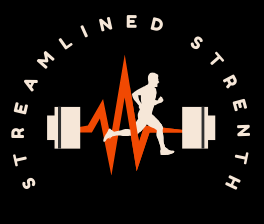Hybrid Athlete Training Program: Overview
Share

A hybrid athlete training program incorporates the benefits of both strength and endurance training.
A hybrid style works to create a physique that is not just strong and powerful, but also capable of endurance and speed - an all around physical threat.
By combining strength and endurance training, hybrid athletes acquire balanced fitness, preparing the individual to take on any athletic feat he or she pleases.
Hybrid Training Objectives
- Build muscle mass
- Increase overall strength
- Improve Cardiovascular Endurance
- Develop Functional Fitness
- Optimize Recovery
Strength & Muscle Building Focus
A proper hybrid program aims to increase muscular growth, strength, and functional power.
Key features include:
Compound movements - your classic lifts such as squats, deadlifts, bench presses, and pull-ups, etc. which train numerous muscular groups.
Variable Rep Ranges: To increase strength and endurance, alternate between heavy, low-rep sets (4-8 repetitions) and lighter, high-rep sets (15-30 reps).
Dynamic exercises:
Functional movements such as overhead lunges, kettlebell cleans, medicine ball tosses, and plyometrics are examples of dynamic exercises.

Endurance Training Focus
Endurance training is often neglected in a hybrid training program because of the time and energy aspect. If done efficiently and consistently, time and energy should not be road block. Endurance training improves cardiovascular fitness and muscle stamina.
Key features include:
Ranging Cardio: Combining lengthy, steady-state cardio workouts (e.g., long runs, bike rides) with intensive interval training (HIIT) and fast-paced sprinting.
Sprints, agility exercises, and intervals will help you enhance your speed and explosive power.
Interval training does not have to be hour long sessions that requires extensive prep time. They can be done in 20-30 minutes pre or post workout .
Recovery Cardio: Light cardio sessions are used on strong strength training days to help recovery and maintain cardiovascular fitness. And same rule applies for light cardio. Completing the session pre or post lift is an effective way to combine two blocks into one.

Example Hybrid Training Schedule:
Monday
Block 1: Heavy Lower Body Strength Training (squats, lunges, stiff leg deadlift, hip thrust, etc.).
Reps: 4-6 (heavy sets); 8-15 (moderate sets).
Block 2: Light cardio (low intensity 30-minute run or bike) - post cardio stretch.
Tuesday
Block 1: Interval Training (100-400m sprint intervals, agility drills, plyometrics etc.). - (e.g. 30 seconds sprint and 60 seconds rest).
Block 2: Upper Body Strength Training (e.g., bench press, bent over rows, hammer curls, shoulder press etc.)
Reps: 6-10 (heavy sets); 8-15 (moderate sets).
Wednesday
Block 1: Functional Movement and Core Day
Exercises such as kettlebell swings, paloff press, side planks, single leg glute bridges, scapular stabalization, etc. - (make sure the exercise puts you out of your comfort zone while adding a mobility aspect.)
Reps: moderate
Block 2: Recovery and Flexibility (e.g., yoga, dynamic stretching).
Thursday
Block 1: Extended Cardio Session (e.g., 4+ mile run or 10+ mile bike)
Time: 40-60+ minutes
Block 2: Light lower body strength training (e.g., Lunges and Step-Ups).
Reps: 10-15 light sets.
Friday
Block 1: Upper Body Strength Training (e.g., incline press, dips, lateral raise, rear delt flys, etc.).
Reps: 4-10 (heavy sets); 8-20 (moderate sets).
Block 2: Explosive Exercises and Sprints (e.g., stairs, plyometrics, sprints, box jumps, etc.)
Intervals/sets: High intensity
Saturday
Block 1: *Tie up loose ends
Wherever you feel is lacking in your routine, Saturday is the day to make up for it.
Whether it be growing bigger arms, getting in better running shape, or increasing your deadlift pr, it's up to you to asses where your time and energy is best spent.
Reps: Personal preference
Block 2: Active Recovery (e.g., walking, hiking, rollerblading - something active that you enjoy).
Sunday
Recovery day - personal preference (e.g., light stretching, yoga, hot/cold tub, massage, active recovery, etc.)
Nutrition
A high-protein, high-carbohydrate diet is essential for growing muscle, maintaining high energy levels, and overall recovery.
Protein is needed for muscle recovery and development.
The baseline recommendation to build muscle is around 0.8 grams of protein per pound of body weight each day. That number seems shockingly low. If you are active and consistently training that number should be closer to 1-1.2 grams of protein per pound of body weight, especially if building muscle is one of you main goals.
Carbohydrates: Are the major source of energy for both endurance and strength exercises. Include complex carbohydrates, such as veggies, fruits, and whole grains.
Fats are essential for general health and vitality. Include healthy fats such as avocados, almonds, and olive oil.
Electrolytes help to keep you hydrated and your muscles functioning properly. Ensure you get enough salt, potassium, and magnesium, especially during high intensity workouts.

Recovery and Mobility
Recovery is an extremely undervalued part of not only the hybrid program but training in general. It allows for more effective training as well as injury prevention.
Recovering properly allows the routine to be sustainable. Anyone can train for a couple days and feel good about themselves - it's the consistency that separates the successful from the unsuccessful.
Sleep: Everyone is different when it comes to how much sleep they need, but somewhere between the 6.5 and 9 hour range is recommended. Quality sleep every night will improve recovery and performance.
Stretching and Mobility: Do dynamic stretching before exercises and static stretching afterward.
Conclusion
The reason I didn't put the exact number of sets and reps is because the program has to work for the individual. There's always going to be obstacles to work around, maybe it rains one day and you can't run, or out of nowhere your gym closes. You have to be able to adapt and work with what you have. It's not about the access to equipment as much as it is the work you're willing to put in.
I love the hybrid athlete training program because it's a complete method that blends strength and endurance training into a balanced, functioning, and high-performing body.
